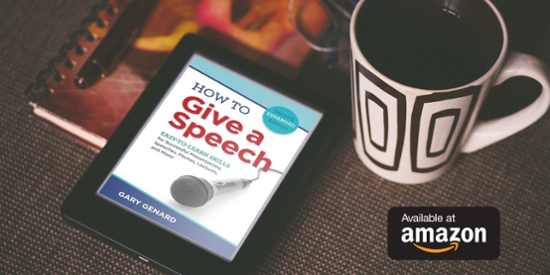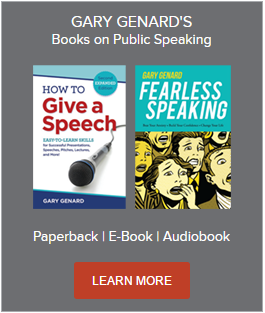
Whether you're pitching an idea or facing tough Q & A, public speaking requires thinking on your feet. Here's how to up your game when you're under pressure!
Is there anything that brings more pressure than high-profile, high-stakes public speaking?
Let’s not count the many millions of people in the U.S. and worldwide who have fear of public speaking. Even for the rest of us, speaking in public is always an exercise in handling pressure. Add the prospects of an important audience, a resistant one, or tougher Q & A than you expected, and you may think the nearest barometer has suddenly gone haywire.
To inspire confidence in audiences, you need to stay focused. Find out how in my free cheat sheet, “10 Ways to Stay Fully Focused when Speaking.”
You might say that the way to handle such pressure is to prepare as much as possible concerning your content. And you’d be right. But there’s another layer you need in terms of preparedness, one that has to do with your ability to think on your feet.
Below are two exercises designed to help you survive and even thrive in the public speaking pressure cooker. Both are useful in giving you practice in thinking on your feet. Use one or the other (or both), based on the type of pressure you’ll be facing.
 Fast and Furious: How to Write a Speech Quickly
Fast and Furious: How to Write a Speech Quickly
You’ll need a little lead-time for this one, though the actual exercise takes just fifteen minutes. Start by writing the most challenging questions you'll be facing, on separate slips of paper. Think of pulling a topic out of a hat and you’ll literally understand the mechanics of this exercise.
Now put those slips of paper aside. The idea here is to make you forget the question topics you wrote down. When you come back to your stash, you’ll be facing those questions approximately as you would in Q & A, i.e., on the spur of the moment. (A variation of this part of the exercise is to have a colleague write the topics so you literally don’t know what you’re going to be asked.)
When you’re ready, choose a topic from the “hat.” Now give yourself just fifteen minutes to compose a 2-3 minute talk that answers this question or discusses this topic. Jot down key words and phrases only—don’t write out a speech to read. You can speak from your notes.
For more on composing a presentation when you're under the gun, learn how to prepare a speech in 15 minutes.
Here’s the rest of the instructions you must follow:
- You'll be making three assertions, and backing up each one with one piece of evidence. Evidence means personal anecdotes, expert testimony, statistics, customer testimonials, case study, etc. (You can make up evidence on the spot if you need to for this exercise, since you’re not giving yourself time to conduct any real research.)
- Find an interesting way to open your speech without simply blurting out your topic. Similarly, try to close strongly. Try to make both your opening and closing memorable.
- Videotape yourself and debrief yourself on the results.
Benefits: This exercise tests four competencies: 1) your ability to organize a coherent response quickly; 2) your skill in marshaling evidence to strengthen a case; 3) your proficiency in constructing a logical argument; and 4) your dexterity in fashioning an interesting response that piques listeners’ interest.
 Turning Up the Heat: One-Minute Impromptus
Turning Up the Heat: One-Minute Impromptus
Now you can really challenge yourself in terms of thinking fast while still speaking eloquently. You'll do it by practicing an exercise I call “One-Minute Impromptus.”
The task in this exercise is simple but devilishly challenging. You'll have one minute to take notes on a topic a colleague gives you (or that you yourself have written down previously, per above). Then, immediately, you’ll speak for one minute on that topic, using your notes if need be. A stopwatch or timer on your smartphone will keep you honest.
If you need help getting over anxiety, here's how to calm your nerves if you only have 5 minutes to spare.
Naturally, you’ll be best served by a topic that’s related to your work or the type of speaking you do. In particular, if you pitch business or routinely face tough audiences, One-Minute Impromptus is a natural skills- and confidence builder.
It may not seem that way at first. You may easily discover, for instance, that you find yourself thinking as the timer beeps: “But I didn’t get to my topic yet!"
In Round 2, you’ll do better. And keep at it. Go through the exercise three, four, even five or six times in succession, using a different topic and videotaping yourself each time. Debrief your performances, either by yourself or with a colleague or even as a team. You may be amazed at your improving ability to speak intelligently and logically in such a brutally short period of time.
Benefits: One-Minute Impromptus tests your ability to speak with clarity and conciseness and to get to the heart of the matter. Speak with this level of compactness and you’ll speak with impact. If you really want to practice thinking fast under pressure, this is the exercise for you.
This blog was previously published in 2016. It is updated here.
You should follow me on Twitter here.



